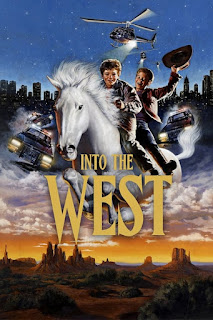DONALD PORTER
Ogden Independent
“State of Play” arrives at a heartbreaking moment for the American newspaper industry. Financial pressures, technology and customer preferences have combined to shatter daily print journalism’s old business model. Its practitioners grow increasingly desperate to hang on, flailing for a way to stop the financial bleeding.
The film argues, convincingly, that shoe-leather reporting is worth saving. It also admits salvation probably isn’t in the cards. It is of the opinion, and rightly so, that blogging – the heir apparent – is a hollow substitute when absent the employment of tried and true methods of information gathering. In the end, we are left with the impression that even if we get all the journalistic heroism this country needs to survive, it likely won’t be enough to alter the inevitable reduction of the Fourth Estate to a trivial, untrustworthy, marginalized corner of American life.
Still, the telling of this tragic tale, against the backdrop of political intrigue, makes for splendid moviegoing. Based on a crackerjack six-hour British TV miniseries – bump it up to the top of your Netflix queue; you won’t be sorry – “State of Play” stars Russell Crowe as Cal McAffrey. His character continues the tradition of every tireless old newspaper scribe you’ve seen in the movies or, if you’ve worked in daily newspapering, witnessed in real life. His car’s a mess, just like his wardrobe, office cubicle and the downscale apartment he calls home.
McAffrey’s no star columnist. Rather, he’s the guy who grinds it out: dispatched by his editors at the Washington Globe – think: The Washington Post – to cover our U.S. capital’s never-ending homicides. As the film opens, he’s tracking down the facts of a double-homicide in which a drug dealer and pizza-delivery bicyclist were killed, execution-style, in a back alley.
Seemingly unconnected is the next-day’s apparent suicide of a congressional staffer. Writing that story is the job of Della Frye (Rachel McAdams), a Globe blogger for whom McAffrey has little respect and significant resentment because, he says, she traffics in rumor as opposed to fact. When she asks him for help on her story – McAffrey’s best friend from college is now a U.S. congressman from Pennsylvania’s 7th District, and he was having an affair with the dead staffer – the aging, rumpled reporter not so politely tells her to shove off.
It turns out the deaths are connected, the suicide was a murder and a Blackwater-like defense contractor’s tentacles embrace powerful congressional offices. In grand newspaper-movie style, the only thing standing between the criminally colluding forces of money and power are a handful of poorly dressed, over-fed, foul-mouthed, hard-drinking, ink-stained newspaper reporters.
Just as a merciful God intended.
The reduction of the Brit series is not, as you might guess, without its trade-offs. That film luxuriated in the details of England’s quite-different media model – though the Web-based content of U.S. papers is beginning to look more and more like that of the tabloid press across the pond. And anyone would have to admit that this new version of “State of Play” has third-act difficulties: a little too neatly packaged, it could be successfully argued.
On the whole, however, that’s quibbling. Generally speaking, the performances are quite good. Crowe carries the film, but McAdams (“Mean Girls,” “Wedding Crashers”) more than holds her own. She exudes confidence regarding the inevitable dominance of the blogosphere, but her Della still is willing to pause long enough to do a few things the old-fashioned way.
Likewise, there’s solid work from Jeff Daniels as a corrupt House leader, Jason Bateman as an oily public-relations operator and the always-amazing Helen Mirren as the Globe’s editor – the latter of whom is trying, in vain, to satisfy the profit-earning mandates of the paper’s new owners while clinging to a tradition of solid reporting and service to the readers.
Less successful: A wooden Ben Affleck as the philandering congressman. Here he takes a real step backward from his memorable performance as the doomed George Reeves in “Hollywoodland.”
“State of Play” doesn’t get all the details right, but it evokes a romanticism about the world of daily newspapers that’s mostly true, and probably on the way out – at least as we now know it. Journalism, like politics, is rife with high-minded ideals, brutal compromise and fascinating, conflicted personalities. It’s perfect grist for the movie mill.
And remember this, too: When you go see the film, stay through the credits. Admittedly, it might only be the mood of a middle-aged guy who spent decades of his life in a craft that’s fading away, but watching the physical production of that Globe newspaper – those stories reported, written and made into something you can hold in your hands – was perhaps what it might have been like to view one of the last wild bison herds in the late 19th century. You pray it will survive, and grow to magnificence again. But for the moment, it almost makes you weep to realize what could be lost.












